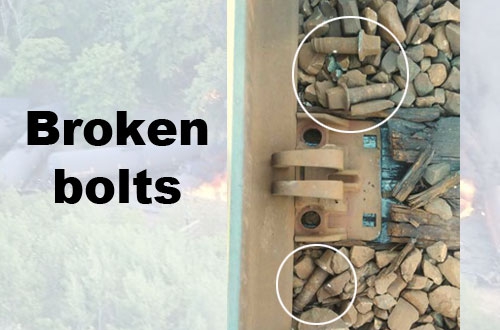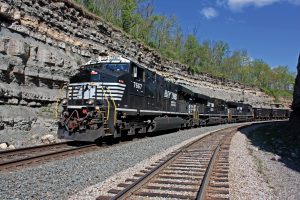FRA’s preliminary report on Mosier derailment points to broken bolts as cause
Written by Mischa Wanek-Libman, editor
A Federal Railroad Administration (FRA) preliminary report of the June 3 Union Pacific oil train derailment near Mosier, Ore., found broken lag bolts that led to gauge widening to be the cause of the accident.
“Unless or until additional details come to light, FRA has made the preliminary determination that Union Pacific’s failure to maintain its track and track equipment resulted in the derailment. Broken and sheared lag bolts, while difficult to detect by high-rail, are more detectable by walking inspection combined with indications of movement in the rail or track structure and/or uneven rail wear, and are critically important to resolve quickly,” the report said.
The UP train carrying Bakken crude oil for U.S. Oil & Refining Company was traveling at approximately 25 mph, within the speed restriction of the track of 30 mph due to track curvature, when the accident occurred and 16 tank cars derailed.
The cars in the train were general purpose specification DOT-111 tank cars that had been modified to the Association of American Railroads (AAR) CPC-1232 standard and were equipped with full-height head shields and metal jackets with insulation, but did not have thermal protection.
The Union Pacific train was equipped with an air brake system and was operating on distributive power. FRA’s preliminary report said that a simulation found that had the train been equipped with electronically controlled pneumatic (ECP) brakes, two fewer tank cars may have derailed and one less tank car may have been punctured. Under mandate, all unit oil trains will be required to have ECP brakes after January 2023. The rail industry has called the ECP brake mandate unjustified arguing that the braking system is unreliable and unnecessary.
Following the release of the preliminary report, Oregon Gov. Kate Brown said its findings “calls attention to serious safety concerns and the need for improved track inspections. I expect the final investigation report to be completed quickly and again call on rail operators to halt oil trains in Oregon until the strongest safety measures are put in place by federal authorities to protect Oregonians.”
After the derailment, FRA conducted walking inspections of all the curves in the Columbia River Gorge to inspect for additional track, fastener, or bolt issues. Additionally, inspectors from state and federal agencies in Oregon and Washington state conducted track inspections along the Columbia River Gorge rail line between Vancouver and Pasco, Wash. Union Pacific has said will resume oil transport along the line this week.
Union Pacific also has plans to use rail spikes instead of lag bolts with similar fastening systems as was found at the derailment site as part of the Class 1s track renewal program.
Two days prior to the derailment, UP detailed plans to invest a planned $34.6 million into its Oregon infrastructure this year. The majority of the funds, $28.5 million, will go to maintain track and $3.8 million will be spent on maintaining bridges.
The railroad said key projects to advance under the Oregon plan include the replacement of 33,372 crossties between Chemult and Oakridge and 28,342 crossties between Bridal Veil and Hood River, as well as replacing nearly four miles of curve rail between Stanfield and La Grande.
The planned 2016 capital expenditure in Oregon is on top of the $193 million the railroad spent between 2011 and 2015 on rail infrastructure in the state.





